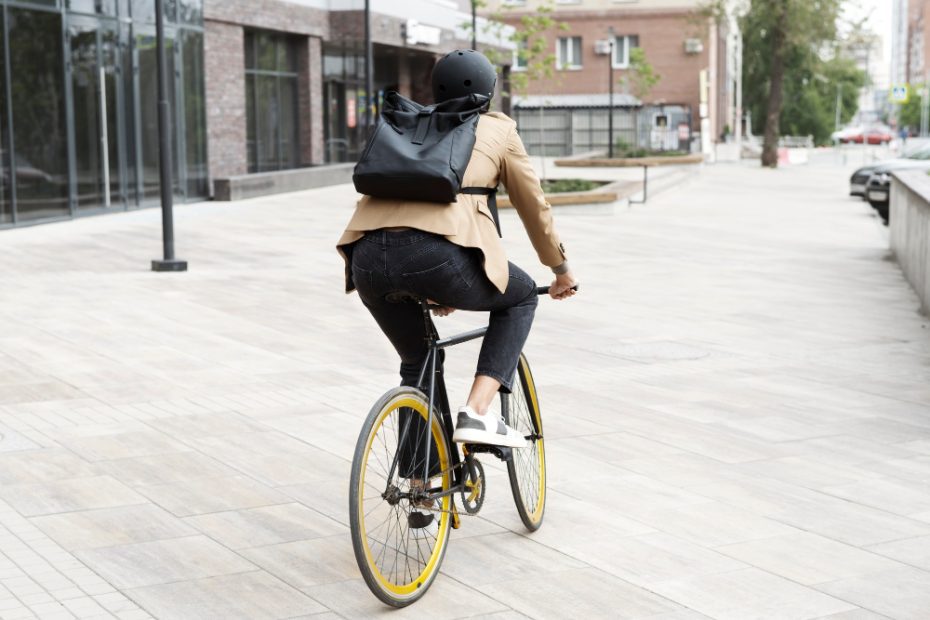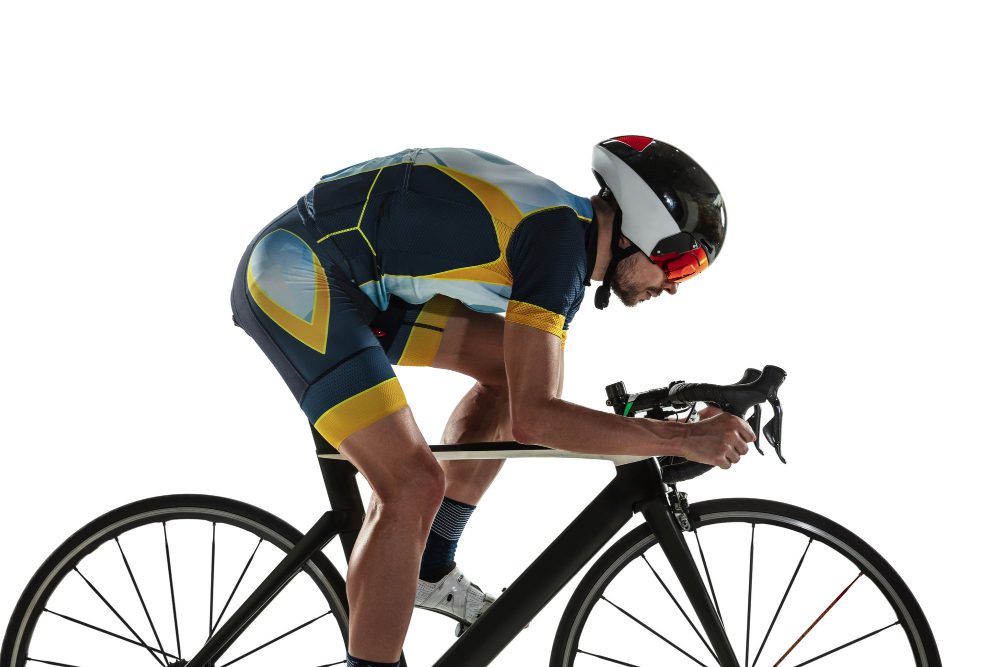Can you use triathlon bikes on the road?
Triathlon bikes are specifically designed for use in triathlon races, which involve cycling as one of the three disciplines. These bikes are built to maximize speed and efficiency, with a focus on aerodynamics and lightweight construction. While they are primarily intended for use in triathlon events, many people wonder if they can be used on the road for regular cycling.
The specific features of a triathlon bike
A triathlon bike typically has several distinct features that set it apart from traditional road bikes. These features include:
- Aero bars: Triathlon bikes are equipped with aero bars, also known as tri bars, which allow the rider to adopt a more aerodynamic position. This position helps reduce wind resistance and increases overall speed.
- Tri-specific geometry: The geometry of a triathlon bike is optimized for the aerodynamic needs of a triathlete. It often involves a steeper seat tube angle, which positions the rider further forward.
- Integrated storage: Many triathlon bikes have integrated storage solutions, such as hydration systems and compartments for carrying nutrition and tools. These features come in handy during long-distance races.
“Triathlon bikes are designed with the specific needs of triathletes in mind, and therefore may not be the ideal choice for regular road cycling.”
Using a triathlon bike on the road
While triathlon bikes can certainly be ridden on the road, they may not be the most practical option for everyday cycling. Here are a few reasons why:
- Aggressive riding position: The aerodynamic positioning of a triathlon bike, with the rider’s upper body placed low and forward, may not be comfortable for longer rides. It can put strain on the neck, back, and shoulders.
- Limited versatility: Triathlon bikes are designed with a single purpose in mind: racing. They may lack the versatility and adaptability needed for various road conditions, such as climbing steep hills or navigating tight corners.
- Handling characteristics: Due to their specific geometry and aerodynamic features, triathlon bikes may have different handling characteristics compared to traditional road bikes. This can take some time getting used to, especially for riders accustomed to a more relaxed riding position.
However, it’s important to note that these limitations depend on personal preferences and individual riding styles. Some cyclists may find triathlon bikes perfectly suitable for road cycling, while others may prefer the comfort and versatility offered by traditional road bikes.
Considerations for road cycling with a triathlon bike
If you do decide to use a triathlon bike on the road, there are a few things to keep in mind:
- Fit and comfort: Pay attention to bike fit and make any necessary adjustments to ensure a comfortable riding position. This may involve changes to the saddle height, stem length, or handlebar position.
- Visibility and safety: Triathlon bikes are often designed with minimalistic aesthetics, which may impact visibility on the road. Consider adding additional reflective elements or lights to enhance your visibility to other road users.
- Tire choice: Triathlon bikes are typically equipped with narrow and slick tires that prioritize speed over comfort or grip. Consider swapping them out for slightly wider tires with more tread if you anticipate rough road conditions.
In conclusion, while it is possible to use a triathlon bike on the road, there are certain limitations to consider. Ultimately, the decision should be based on your specific riding goals and preferences. If you primarily engage in triathlons or time trials, a triathlon bike would be an excellent choice. However, if you enjoy a variety of road cycling disciplines or prioritize comfort over speed, a traditional road bike might be a better option.
Can you ride a tri bike like a road bike?
Triathlon bikes, also known as tri bikes or time trial bikes, are designed specifically for the sport of triathlon. These bikes are built with aerodynamics in mind, featuring a more aggressive riding position, aero handlebars, and specialized frame geometry to reduce wind resistance. While they excel in triathlon races, many people wonder if they can be used for regular road cycling.
The short answer is yes, you can ride a tri bike like a road bike. However, there are a few things to consider before using a triathlon bike on the road.
Riding Position
One of the key differences between a tri bike and a road bike is the riding position. Tri bikes have a more forward and aerodynamic position, which can be less comfortable for long rides compared to the more upright position of a road bike. It is essential to ensure that your body is conditioned for the different riding position to avoid discomfort or potential injuries.
Handling
Triathlon bikes are designed for straight-line speed and stability, which means that they may not handle as well as road bikes in tight turns or technical descents. It’s important to practice and get familiar with the handling characteristics of your tri bike before taking it out on the road.
Group Riding
When riding in a group or peloton, the aerodynamics of a triathlon bike may not be ideal. The aggressive riding position and aero handlebars can make it challenging to maneuver and draft off other riders effectively. Road bikes are generally more suitable for group riding due to their versatility and maneuverability.
Gearing
Triathlon bikes often have different gear ratios compared to road bikes. They are typically optimized for flat courses and time trials, with larger chainrings and smaller cassettes. This gearing setup may not be ideal for tackling steep climbs or varied terrain encountered on regular road rides.
Ultimately, whether you can ride a tri bike like a road bike depends on your personal preferences and the type of cycling you plan to do. If you primarily participate in triathlons and want to improve your speed and aerodynamics, a triathlon bike is a great option. However, if you enjoy a variety of road cycling activities, including group rides and hilly routes, a road bike may be a more versatile choice.
If you decide to use a triathlon bike for road cycling, take some time to adjust to the different riding position and handling characteristics. Consider adding some accessories, such as a saddlebag or water bottle holder, to make your road rides more convenient. Remember to always prioritize safety by wearing a helmet and following traffic rules.
Why don’t road cyclists use tri bikes?
Triathlon bikes are designed with specific features to maximize speed and efficiency in triathlon racing, which consists of swimming, cycling, and running. While these bikes excel in triathlon events, they are not commonly used by road cyclists.
Differences between Road Bikes and Triathlon Bikes
Road bikes and triathlon bikes have distinct characteristics that make them suitable for different purposes. Road bikes are designed for endurance rides, general road cycling, and a variety of terrains, whereas triathlon bikes prioritize aerodynamics and speed.
Some key differences include:
- Riding Position: Triathlon bikes have a more aggressive and aerodynamic riding position, with a steeper seat tube angle and lower handlebars. This position reduces wind resistance but can be less comfortable for long rides.
- Frame Design: Triathlon bikes often have a longer top tube and steeper seat tube angle, placing the rider closer to the front wheel. This design improves aerodynamics but may sacrifice stability and maneuverability.
- Aero Features: Triathlon bikes typically have additional aerodynamic features, such as integrated handlebars, deep-section wheels, and aerodynamic frame tubes. These features optimize the bike’s performance in time trial races but may not offer significant advantages for regular road cycling.
Limitations of Triathlon Bikes on the Road
While triathlon bikes are designed for speed, they have certain limitations that make them less suitable for everyday road cycling:
- Comfort: The aggressive riding position of triathlon bikes can be uncomfortable for longer rides, particularly for riders who prefer a more relaxed riding posture.
- Handling: The design of triathlon bikes prioritizes straight-line speed and aerodynamics, sacrificing agility and maneuverability. This can make them less suitable for road cycling, which often involves quick turns, traffic, and varying road conditions.
- Cost: Triathlon bikes tend to be more expensive than road bikes due to their specialized features and materials.
“Triathlon bikes are like racing cars, built for specific purposes. They excel in triathlons, but for regular road cycling, a road bike is generally a better choice.”
However, it’s important to note that some road cyclists may still choose to ride triathlon bikes for various reasons, such as personal preference, specific training goals, or participating in both triathlons and road cycling events.
In conclusion, while triathlon bikes offer advantages in triathlon racing, they are not commonly used by road cyclists due to factors such as riding position, handling characteristics, and cost. For most road cycling enthusiasts, a road bike provides a more versatile and comfortable option for everyday riding.



